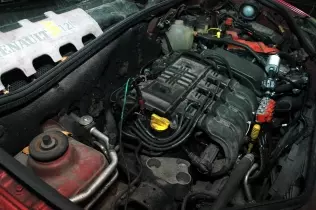- Main page
- Search
- Up to date
- Products
- Technology
- Vehicles
- Video
- Conversion Payback Simulator
Port Injection - Conversion Payback Simulator
Direct Injection - Conversion Payback Simulator
Diesel - Newsletter
Ignition coil diagnostics
 loading results...
loading results... © gazeo.comApparently, ignition coil failures are not more common in LPG/CNG-powered cars than in those powered with petrol only
© gazeo.comApparently, ignition coil failures are not more common in LPG/CNG-powered cars than in those powered with petrol onlyUnfortunately, the ignition system's drop in performance does not necessarily mean complete lack of spark. It happens that functioning problems occur temporarily and under certain conditions only. Periodical malfunctioning most often occurs to ignition coils, which results from their built and the environment they operate in.
LPG power
Converting an engine to run on LPG instead of petrol poses a challenge to ignition coils for LPG is more difficult to ignite. Theoretically, longevity of coils may (but not necessarilly will) be shortened in autogas-powered engines for that reason. Ignition coils should only be replaced once they show first signs of malfunctioning, such as: cold start difficulties, irregular ignition, engine roughness or vehicle bobbing while accelerating. Engines equipped with EOBD self-diagnostic tools might give a warning by flashing the check engine icon on the dashboard before any symptoms are actually visible as there will be an error stored in the engine's ECU.
Checking through elimination
Before you decide to have the coil diagnostics peformed, make sure you check the ignition system's other elements, such as spark plugs, cables and, in older engines, also the distributor. If you eliminate them as the possible source of malfunction, but symptoms remain, then have a close look at the ignition coil.
 © gazeo.comA diagnoscope (Bosch MOT 251 in this case) working as an oscilloscope is very useful for diagnosing various elements, including ignition coils
© gazeo.comA diagnoscope (Bosch MOT 251 in this case) working as an oscilloscope is very useful for diagnosing various elements, including ignition coilsInitial diagnostics
First of all, the ignition coil needs to be inspected in terms of external physical damage (to the housing). Even minor cracks or other types of mechanical damages may influence the coil's functionality, especially in high humidity conditions. Ultimately, water may penetrate the housing and cause damage to the winding. Next, it is crucial to check the condition of contacts and power wiring. Contacts ought to be clean and rust-free, as corrosion may cause voltage drops. To avoid them, it is also very important to keep the battery and its charging system in good running condition. If voltage in the car's electrical system is too low, the ignition coil needs more time to charge and may not perform properly in terms of discharge voltage.
Diagnosing coil underperformance may prove troublesome and time-consuming, especially if problems only occur periodically. The "dentist syndrome” (lack of symptoms when you visit a specialised workshop) only makes things worse. This is when professional diagnostic tools step in to save the day. Using them is not particularly complicated, but requires certain amount of preparations first. However, interpreting the results needs quite a knowledge and experience.

You may also find these interesting:
 loading results...
loading results...








